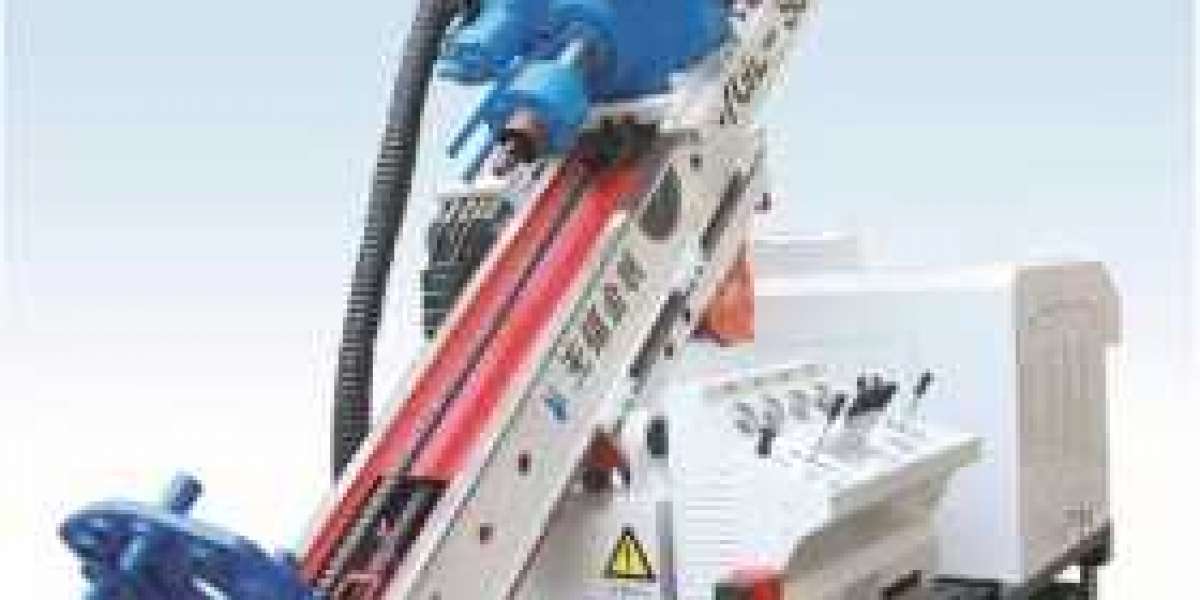Introduction of sonic drilling rig:
The main equipment of sound wave drilling is the vibration rotary power head, and the power head can be generated.
High frequency vibration and low speed rotation can be adjusted by repeated swinging around the equilibrium point and form vibration, energy accumulation in the drill pipe, when reaching its natural frequency, cause resonance and Get release, transfer, energy through the efficient transfer of the drill pipe, so that the drill pipe and drill bit constantly to the rock into the soil. The vibration wave energy is vertically transmitted to the drill column, and the frequency can generally reach 3000~6000 times / minute, and the impact power can reach 3~20 tons. Due to the lower mechanical wave vibration range, can
Cause people's hearing, so the habit is called sound wave drilling.
Widely used in engineering survey, environmental protection survey hole, ground source heat pump hole, sand and gold Geological exploration, dam and tailings monitoring hole, Marine engineering survey, drilling and sampling of dam foundation and grouting, and micro-piles, well holes, etc.
Wide formation adaptation range
In the deep accumulation of 0-100 meters, all kinds of loose layers, such as sand, silt, clay, gravel, coarse gravel, gravel, moraine, gravel pile, garbage accumulation, and soft rock, can effectively, high speed continuous original sampling and drilling, as well as a full set of pipe holes. And this is incomparable to the traditional drilling method.
Fast hole-forming speed and high straightness of drilling.
Drilling is an effective superposition of three drilling forces: vibration, rotation and pressurization, especially vibration action sound wave, not only effectively broken rock, but also make the rock and soil drainage and liquefaction, so as to obtain get a higher drilling speed. The drilling speed is usually 20-30 m / hour, more rapid than the conventional rotary drilling side method is more than 5 times faster. The drill hole has high straightness and deviation of less than 1%.2.4 Good fidelity of rock and soil samples.
Sound drilling can be collected in overburden and soft bedrock with large diameter, strong representation, good fidelity continuous rock and soil samples without mixing layer. Perturbation is minimized and is especially suitable for application in the original state of acquisition samples and pollution-free samples.
Less environmental pollution, it is a green construction method.
Normally, sonic drilling is done without mud or slurry treatment agent Liquid, less water or no water, drilling waste is 70%~80% less than conventional drilling, Thus, the environmental pollution of drilling fluid is reduced. In addition, the construction process of environmental protection, construction noise
Low, has little impact on the surrounding environment.
Good construction safety.
The acoustic drilling adopts the casing follow-up wall protection technology, and the casing follow-up and sampling are carried out simultaneously.
The outer tube can protect the hole wall well and prevent it from collapsing. It also isolate the aquifer, avoid cross-contamination. Because of the protection of the outer casing, so it is not afraid of stuck drilling, buried drilling, drilling less accidents in the process hole.
Various construction techniques
The rope drilling process can be used to achieve sampling without drilling; single pipe and single movement double-tube sampling and drilling. Efficient continuous drilling with a larger diameter casing (4-12 inches).
Low drilling costs.
Foreign sonic drilling machine construction, generally requires drilling more than 100 meters every day, because of drilling Fast speed, shorter construction cycle and lower labor costs; no mud and less drilling
Access, less material consumption, reduce the site cleaning costs.






